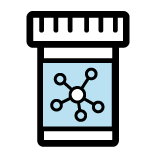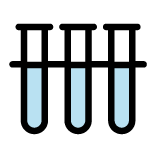Biosimilars - What You Need to Know
Reference Biologics
- Biologic drugs have changed the way we treat and prevent many diseases like cancer, arthritis, diabetes, inflammatory bowel disease, psoriasis and vasculitis.
- Biologics are complex and much harder to make than traditional drugs made using chemicals.
- Biologics are made from living cells (like animal cells, bacteria or yeast) and therefore always have very small differences between batches.
Biosimilar Biologics
- Biosimilar biologics are highly similar copies of reference biologics.
- They work just as well and may have the same side effects as their reference biologic.
- Every biosimilar approved in Canada is just as high quality, safe and effective as all biologic drugs.
- Biosimilar drugs are not the same as generic drugs. A generic drug has the exact same active ingredients (the chemicals that make the drug work) as a brand name drug. For example, you can buy ibuprofen as Advil (brand name) or a store brand (generic).
- To date, more than 55 biosimilars have been approved in Canada, and more are likely to become available.
It is Safe to Switch From Reference to Biosimilar Biologics
- Biosimilars have been available in Europe for over 15 years. Switching from reference to biosimilar biologics has become common clinical practice.
- Many Canadian provinces have switching policies in place.
- Studies with over 21,000 people have shown that switching from a reference to a biosimilar biologic is safe and effective because biosimilar drugs work the same way as their reference biologic.
- If you were taking a reference biologic drug and are now taking a biosimilar drug, you should expect to have the same results and the same side effects.
- Talk with your health care provider if you have questions about switching to a biosimilar.
Why Biosimilars are Available in Canada
- Reference biologic drugs are initially protected by a patent.
- While reference biologic drugs are patent protected, only one company can sell that biologic, which makes them very expensive.
- As the patents for reference biologic drugs expire, other companies can request approval from Health Canada to sell biosimilars.
- The money that is saved with the use of biosimilar drugs can be used to fund new therapies.
How Switching Helps the Health Care System
- In Canada, the cost of biologics has tripled over the last decade, reaching $10 billion in 2020. This is about one-third of all the money spent on medications.
- If more Canadians were to use biosimilars, experts estimate that Canada could save up to $1.8 billion each year.
Health Canada Monitors how Biosimilar Drugs are Made
- Biosimilars are approved and monitored by Health Canada to the same standards as the reference biologic drug.
- Health Canada and manufacturers are both responsible for monitoring biologics and biosimilars.
- Manufacturers must report any serious side effects to Health Canada, inform them of any studies with new safety information, and request their approval for any changes made to the drug.
- Companies that make biosimilars must give information to Health Canada comparing the biosimilar with the reference biologic drug.
- For a drug to be called a biosimilar, the company that makes the biosimilar must prove to Health Canada that it is safe and works just as well as the reference biologic drug.
What to Expect When Taking a Biosimilar
- Your care will be the same whether you take a reference biologic drug or a biosimilar drug.
- As with taking any medications, if you have any problems while taking biosimilars, speak to your healthcare team right away.
For More Information
You May Also Be Interested In
Pan-Canadian Oncology Biosimilars Initiative
Learn about the joint initiative to ensure the implementation and use of therapeutic oncology biosimilars are appropriate and cost-effective across Canada.
View Pan-Canadian Oncology Biosimilars Initiative








